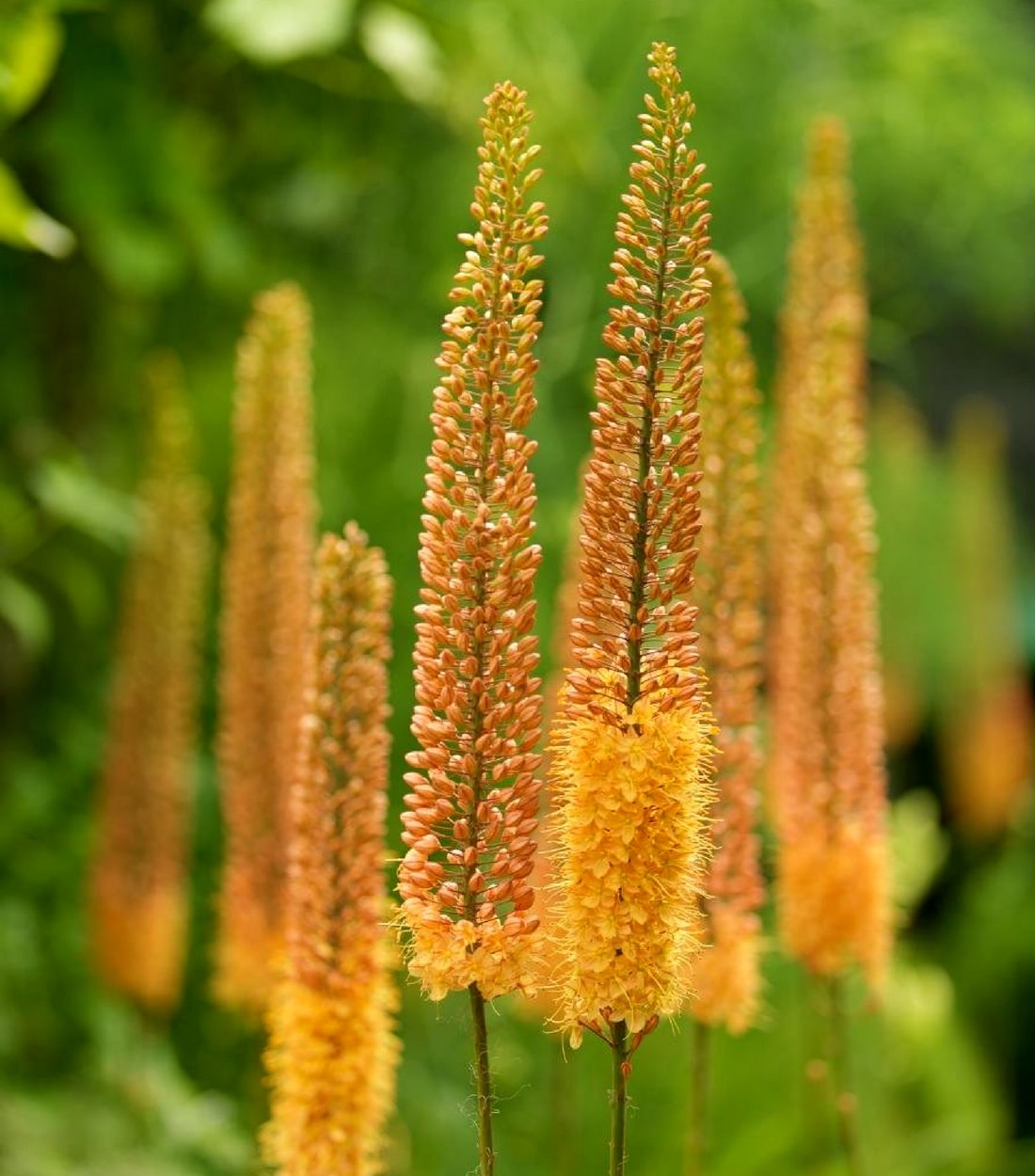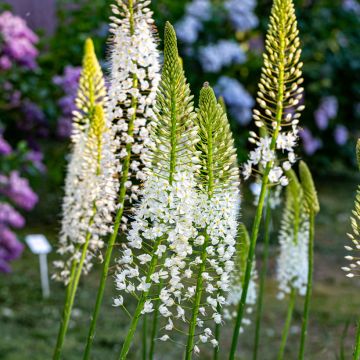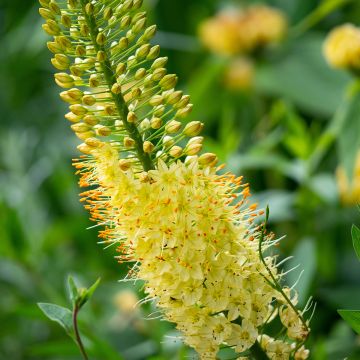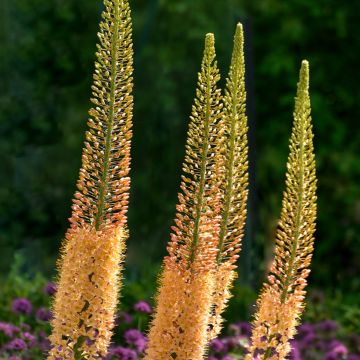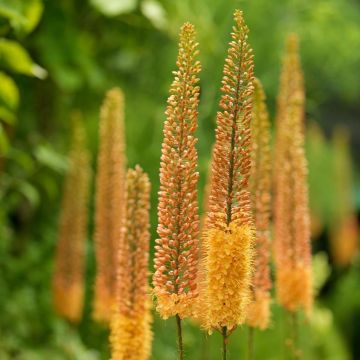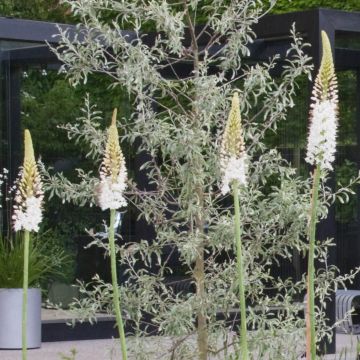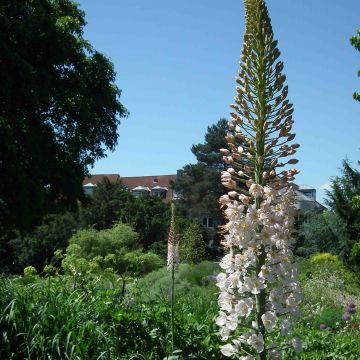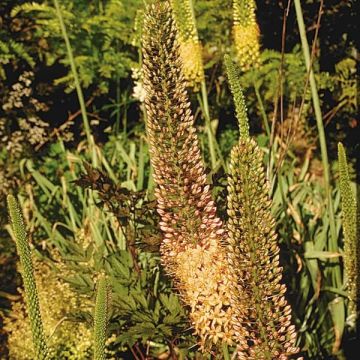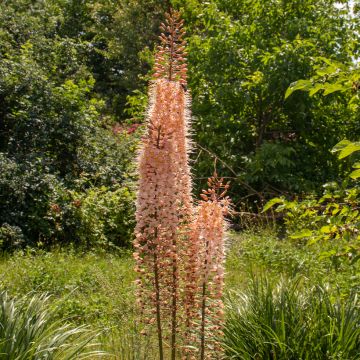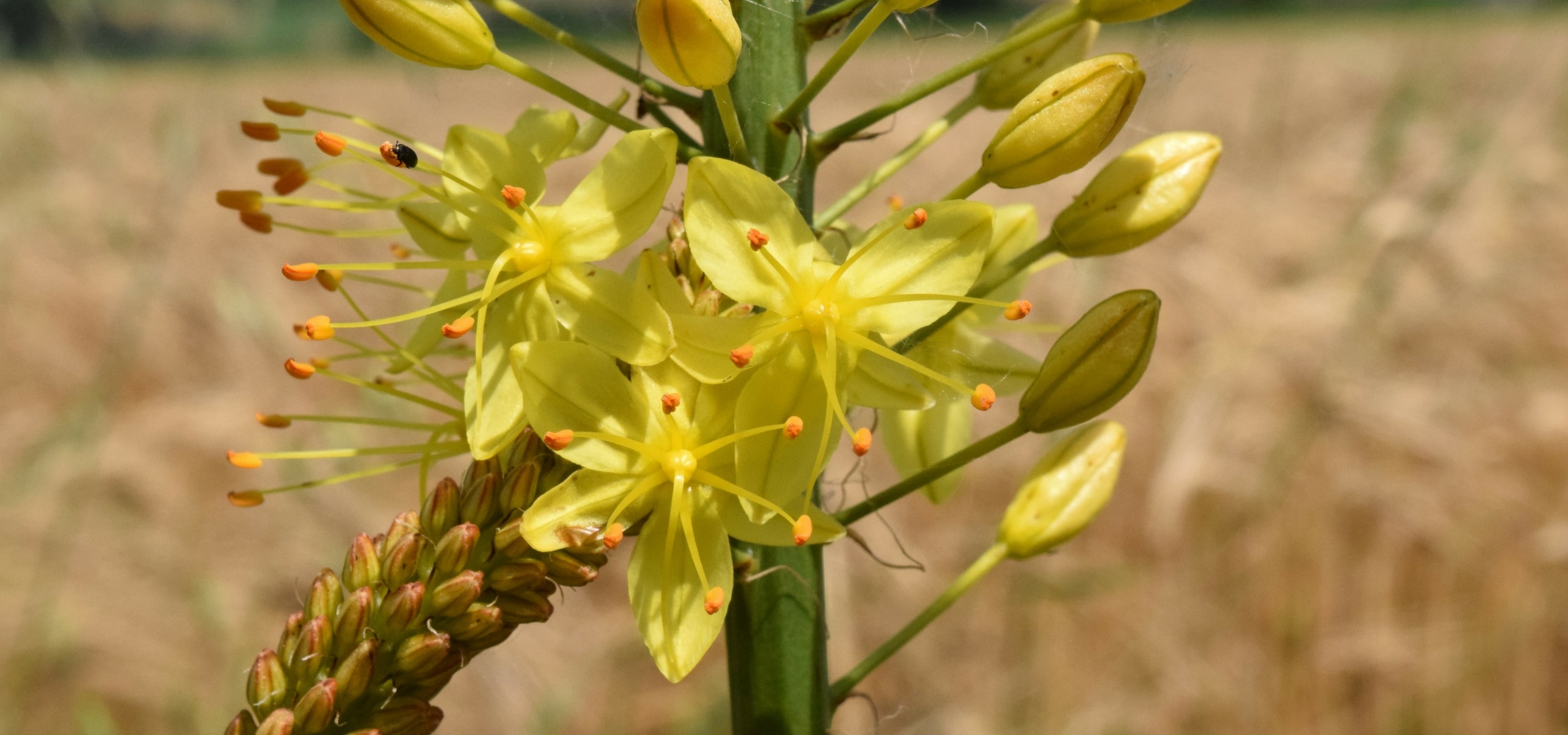
Eremurus: planting and care
All our tips to grow steppe lilies
Contents
With its majestic flower spikes reaching up to two metres in height, Eremurus, also known as the foxtail lily, is a spectacular perennial that adds a touch of exoticism and verticality to borders. Native to the arid regions of Central Asia, this plant impresses with its spikes of star-shaped flowers in warm colours ranging from bright yellow to orange, with pale pink and white in between.
Despite its sophisticated appearance, Eremurus is relatively easy to grow, provided that a few essential rules regarding its planting and care are followed. Its main secret? Well-drained soil and a sunny location to replicate its natural conditions.
In this article, discover how to plant and care for Eremurus so that it thrives in your garden and provides you with a spectacular flowering display!
When to plant eremurus?
Plant your eremurus preferably in autumn, ideally in October. This period allows the fleshy roots to settle in before the arrival of severe frosts, thus promoting better recovery in spring. If you have missed this window, it is still possible to plant your Eremurus in early winter, until December, or even in January in regions with mild winters. However, the later the planting, the more important it is to protect the roots from the cold with good mulching.
Where to plant Eremurus?
Eremurus thrive in very sunny situations, sheltered from strong winds that can damage the flower spikes. They will flourish in a south-facing exposed area.
They have a critical need for very well-drained soil, otherwise the bulb risks rotting in winter. Unless your soil is extremely porous (sandy substrate and sloping terrain), you will need to work on the drainage: this is the secret to successfully growing this exceptional plant.
Indeed, eremurus does not like heavy, clayey soils, as they retain moisture in winter, which its bulbs cannot tolerate at all.
Although it accepts poor soils, it prefers rich soils, which is why we recommend adding well-decomposed compost. Furthermore, it tolerates calcareous soils quite well.
Discover other Eremurus - Foxtail Lily
View all →Available in 0 sizes
Available in 2 sizes
Available in 2 sizes
Available in 1 sizes
Available in 1 sizes
Available in 1 sizes
Available in 1 sizes
Available in 1 sizes
Available in 1 sizes
Available in 1 sizes
How to plant Eremurus?
Planting Eremurus, or the steppe lily, requires a bit of care as this plant does not appreciate being moved once it is well established. So take the time to properly prepare its location.
The “bulbs” of Eremurus are actually fleshy roots arranged in a star shape around a central bud. These roots, resembling tentacles, are fragile. It is normal for some to be slightly damaged or broken during handling: this will not affect the growth of the plant. These roots primarily serve to stabilise the future flower spike at the beginning of its growth.
Spacing:
Space the plants 60 cm to 1 m apart, depending on the height of the chosen varieties. The taller varieties, which can reach 2 metres in height, require more space to develop harmoniously. For a spectacular visual effect, plant them in groups of 3 to 5 bulbs, creating beautiful floral clumps.
To plant your eremurus, follow these steps:
- Choose a location in full sun, with light, well-drained, fertile soil. Enrich the soil with well-decomposed compost to provide essential nutrients.
- Dig a wide hole about 15 cm deep. Eremurus needs space for its spreading roots.
- Loosen the bottom of the hole and add a layer of gravel or coarse sand (5 to 10 cm thick). This drainage is crucial to avoid water stagnation, the main cause of root rot.
- Gently place the bulb on the drainage layer, with the bud facing upwards. Spread the tentacle-like roots without bending them as much as possible.
- Cover the bulb with about 8 cm of a mixture of garden soil, compost, and coarse sand. Eremurus prefers rich but well-aerated soil.
- Lightly firm the soil to eliminate air pockets, then water moderately. Overwatering could promote rot, especially in heavy soil.

Eremurus should be planted on a drainage layer (here, gravel)
You can also plant your eremurus in a pot, which works very well for it:
- Choose a pot that is large enough, with a minimum diameter of 40 centimetres for the taller varieties, and 30 centimetres for the shorter ones.
- Add a drainage layer made of gravel and sand at the bottom of the pot.
- Provide a mixture of sand, compost, and potting soil.
- Place the bulb with the roots curving downwards.
- Cover with 8 cm of soil.
- Water lightly.
In a pot, the substrate dries out faster than in open ground. We recommend watering but in moderation, when the soil is well dry on the surface.
How to care for eremurus after planting?
Eremurus require almost no maintenance. They can easily survive winter in the ground, provided the soil is well-drained. They tolerate drought well but dislike excess moisture. They begin flowering from late spring (April or May) and then enter dormancy in early summer.
- We recommend cutting the flower spike at the end of flowering.
- Eremurus cope very well with summer drought, but may occasionally need some watering in spring, especially if you are growing them in pots. Water sparingly if spring is very dry.
- Support the tallest varieties if you plant them in a wind-exposed area.
- You can propagate them by dividing the clumps every three to five years, or by sowing seeds in autumn (but they will take several years before they start to flower).
- We advise adding compost in spring as Eremurus is a hungry plant that appreciates rich soils. Add fertiliser if you are growing them in pots.
- Subscribe!
- Contents































